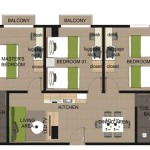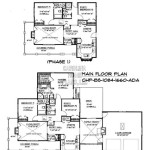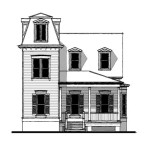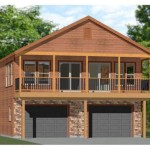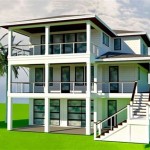Exploring Manor House Floor Plans: A Look at Two-Story Designs
Manor houses, with their imposing presence and captivating history, offer a fascinating glimpse into the lives of past generations. The floor plans of these grand residences reveal much about the social structures, architectural styles, and practical considerations of their time. Two-story manor house plans, in particular, exemplify a classic design that has evolved over centuries, reflecting changing trends and needs.
Key Features of Two-Story Manor House Floor Plans
Two-story manor house plans typically share certain key features, though variations exist depending on the era and specific location. These features include:
- Central Hallway: A grand hallway serving as the heart of the home, often extending the full height of the building and adorned with elaborate staircases. This space acts as a central point of circulation and a visual focal point.
- Formal Reception Rooms: Spacious rooms intended for entertaining, such as drawing rooms, libraries, and dining rooms. These rooms were often situated on the first floor to showcase the grandeur of the house.
- Private Quarters on the Second Floor: The second floor typically housed the bedrooms and private spaces for the family, offering a degree of separation from the public areas below.
- Servant Quarters: In larger manor houses, the second floor often included areas for servants, kitchens, and other essential services, reflecting the hierarchical nature of society during those times.
- Symmetrical Design: Manor house plans often exhibit a symmetrical layout, creating a sense of balance and order. The façade, with its multiple windows, doors, and decorative elements, reinforces this symmetrical design.
Evolution of Two-Story Manor House Plans
Manor house plans evolved significantly throughout history, reflecting changing architectural styles and societal norms. The evolution can be broadly categorized as follows:
- Medieval Manor Houses (11th-15th centuries): These houses were typically built around a central courtyard with a hall as the primary living space. The upper floor provided rudimentary accommodation and storage. As wealth and influence grew, these structures gradually became more complex, incorporating additional rooms and a greater degree of comfort.
- Tudor Manor Houses (15th-16th centuries): The Tudor period saw a shift towards more elaborate designs. Manor houses gained distinctive features such as timber framing, gabled roofs, and bay windows. The emphasis on grandeur and comfort extended to the interiors, with tapestries, stained glass, and ornate fireplaces.
- Jacobean Manor Houses (1603-1649): Jacobean manor houses continued to refine the Tudor style while introducing elements of classical architecture. They often featured symmetrical façades, elaborate chimneys, and interior spaces designed for both grandeur and practicality.
- Georgian Manor Houses (1714-1837): Georgian architecture emphasized symmetry, simplicity, and elegance. Manor houses of this period often featured a central Palladian-inspired design with a formal facade, a grand entrance hall, and clearly defined spaces. The focus shifted to creating rooms that were both spacious and functional.
- Victorian Manor Houses (1837-1901): Victorian manor houses emerged with a more eclectic style, borrowing from various historical periods. Decorative features, ornate details, and a wide array of architectural elements characterized these houses. While often grand in scale, they also often incorporated practical features like central heating and modern plumbing.
Adapting Manor House Plans for Modern Living
While the grand scale and historical significance of manor houses continue to fascinate, modern homeowners seeking to adapt these plans for contemporary living must consider the challenges and opportunities they present. The large footprint, intricate details, and often high ceilings of manor houses require careful planning and adaptation to meet contemporary lifestyle needs.
Modern adaptations of manor house plans often focus on:
- Open-plan layouts: Combining traditional rooms into larger, interconnected spaces to improve flow and create more flexible living areas.
- Updated functionality: Incorporating modern amenities like kitchens with state-of-the-art appliances, energy-efficient systems, and smart home technology.
- Preservation of historical character: Retaining original features, such as fireplaces, moldings, and staircases, while blending them with contemporary design elements.
- Outdoor living spaces: Connecting the interior spaces with expansive patios, gardens, and outdoor living areas, blending indoor and outdoor living.
Whether seeking inspiration for a modern home design or simply exploring the history of architecture, two-story manor house plans offer a rich source of ideas and insights. They showcase the evolution of architectural styles, societal norms, and the enduring appeal of grand living spaces.

Dysart Castle House Plan Plans Mansion Floor English Country

2 000 Sq Ft House Plans Houseplans Blog Com

Explore Rustic 3 Bedroom Country Mountain Home Floor Plan With Wraparound Porch

New House Plans Under 2 000 Sq Ft Houseplans Blog Com

Low Budget Simple House Design Plans For Builders Blog Builderhouseplans Com

Andrew Charles Borzner 1928 Beautiful Homes How To Plan Vintage House Plans

2 000 Sq Ft House Plans Houseplans Blog Com

New House Plans Under 2 000 Sq Ft Houseplans Blog Com

Floor Plan Aflfpw24184 2 Story Home Design With 3 Brs And Baths Colonial House Plans Style

House Plans Floor Blueprints
Related Posts


